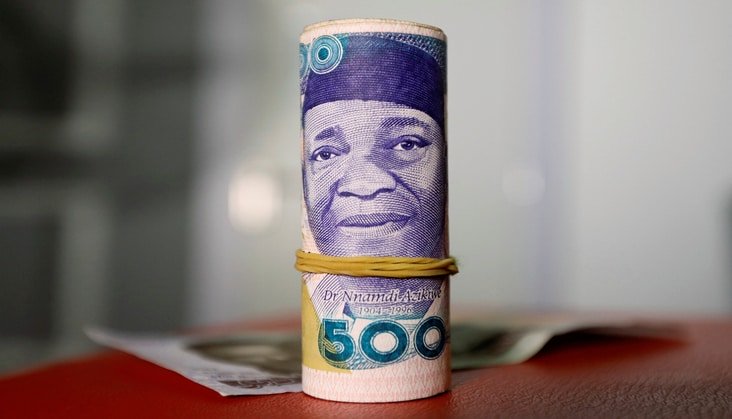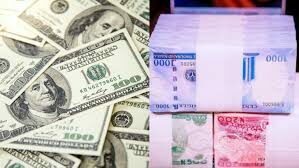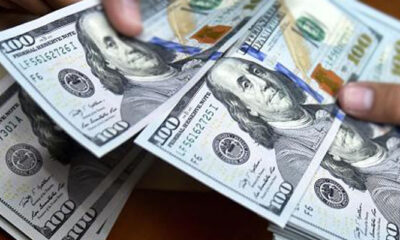Business & Economy
BREAKING: Naira Falls To N445.75/$ At Official FX Market

The Nigerian currency, Naira falls further to N445.75 per United States (US) dollar at Investors’ and Exporters’ foreign exchange, FX, market over tight liquidity level.
BrandNewsDay reports that across the FX market, dollar scarcity has become persistent following weak inflows from oil receipts, declining hot monies and dwindling remittance levels.
While demand for foreign currencies for approved imports continues to rise, dollar supply has remained relatively tight. Assessment of the Central Bank of Nigeria’s (CBN) decision to ban certain goods from accessing FX has been neutral.
Macro data indicates that demand for foreign currencies continues to exceed with margin the amount the local market could generate and supply, thus forcing the exchange rate higher.
In the parallel market, the Nigerian Naira edged the dollar to N690 from as high as N900 over spurious demand that greeted the Central Bank of Nigeria’s planned naira redesign.
RECOMMENDED: Dollar To Naira Black Market Exchange Rate Today Tuesday, 15 November 2022
While sanity returns to the black market, the naira depreciates at the Investors’ and exporters’ foreign exchange window, dropping by N0.25 or 0.06% in a week to close the week at N445.75.
This is a moderate slide – however, could make significant impacts on importers’ or manufacturers’ production costs due to the volume of dollar demand- when compared with an exchange rate of N445.50 in the previous week’s close.
Over the trading activities sessions, currencies traders said market participants maintained their bids between N444 and N452 at the official FX window
At the Interbank Foreign Exchange Forward Contracts market, the spot exchange rate remained unchained from the previous week as it closed the week at N445 from last week.
Meanwhile, data show that Nigeria’s gross external reserves sustained its decline for the tenth consecutive week, falling by $141.14 million to $37.22 billion. In 10 months, FX reserves have declined by 8.07 per cent or $3.27 billion from $40.52 billion at the beginning of the year.
At the current level, Nigeria’s external reserves could cover about nine months of imports based on the balance of payments for the 12 months to June 2022, and 6.5 months when services are added, Cowry Asset Management said in a note.
Foreign currency liquidity condition has been weak at the Investors and Exporters Window despite the CBN’s efforts at boosting FX inflows through incentivising non-oil exports.
Specifically, inflows into the official importers and exporters FX trading window declined to their lowest level since April 2021, falling by 41.2% month on month to $676.80 million in October from $1.15 billion in September, according to Cordros Capital.
Analysts noted that the inflows from foreign investors declined for the fourth consecutive month to $72.0 million – the lowest print in 19 months, given the lack of reforms in the FX framework, higher global interest rates and, weak macroeconomic narratives.
Traders’ market report stated that domestic investors’ inflows declined by 42.5% month on month to $604.80 million as the euphoria from exporters’ inflows cooled off 46.2% in the month.
“Over the short-to-medium term, we do not expect liquidity conditions to retrace towards pre-pandemic levels due to still weak inflows from foreign investors when it contributed 53.8% of total Investors and exporters dollar inflows in 2019.
“We think foreign investors will need more convincing actions from the CBN as regards flexibility and clarity in the foreign exchange framework before a resurgence of interest in the market, as witnessed in 2017 when the Investors, exporters FX window was established”, Cordros Capital stated in a note.















